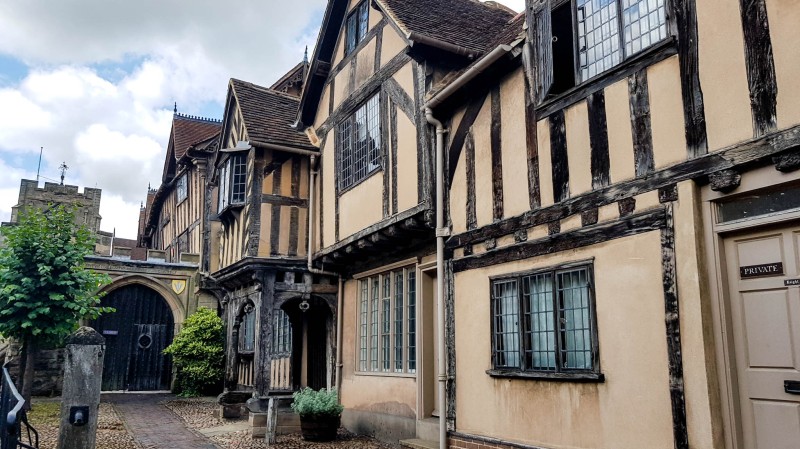You are here: Can I build an extension on a Listed Building?
Buildings are listed for a reason, which is to protect their historical and architectural significance. These buildings will be of special interest, which means that alterations and building work can’t be carried out without written consent from the relevant authorities.

Buildings may be listed by the Department of Culture Media and Sport because:
- they are of architectural interest - because of their design and craftsmanship
- they are of historic interest - buildings which illustrate an aspect of the nation's social, economic past
- they form part of our cultural or military history
- they have an historic association - buildings that have a close historical association with nationally important people or events
- they have a group value - buildings that form part of an architecturally important group of buildings, such as squares or terraces
Listed buildings are classified into grades as follows:
- Grade I - approximately 2 per cent of all listed buildings come into this category and these are buildings of exceptional interest.
- Grade 2* - approximately four per cent of listed buildings, these are particularly important buildings and of more than special interest.
- Grade 2 – are buildings of special interest, requiring that every effort be made to preserve them. 94 per cent of all listed buildings are Grade 2.
On that basis, the Department of Culture Media and Sport (DCMS) sees it as being very important to preserve these buildings and to ensure that they are not spoiled by unsuitable alterations. That being the case, Local Authority Planning departments take their remit on Listed Buildings very seriously and getting permission to carry out work, even remedial, may not always be easy
The need for Planning Permission applies to all buildings in the UK and for Listed Buildings, it may be needed in addition to Listed Building Consent. Your Local Authority Planning Department will be able to advise you on what is required. If you require both it is as well to apply for both simultaneously as this will save time.
The easiest way to navigate a process which we have already recognised as being difficult is to try to find ways to make it easier before we start and the process of getting Listed Building Consent is no different. The most effective way of making life easier at this stage is to recognise that the Planning Department is not the enemy. It is there to protect the heritage of your Listed Building and can in actual fact be a valuable asset in getting through this difficult process. So speak to the Planning or Conservation Officer early in the process, explain what you want to achieve and show that you want to do this in a way that is sensitive to the property and the ideals of a Listed Building. Most officers will appreciate this and work with you. This may mean changes or alterations to your initial plans but by accepting these, you may get an eventual acceptance, rather than a refusal.
Obtaining Planning Permission or Listed Building Consent will undoubtedly involve retaining the services of an architect, so be sure that your architect of choice has the relevant experience and knowledge of working in this historic building environment.
Permissions or Consents are required on all building or alterations work that may affect the character of the building that saw it being listed in the first place. This applies to internal alterations as well as external works and also covers any outbuildings or structures within the curtilage of the main building.
You may only be planning a small alteration internally, but a number of such alterations over a period of time can detract from the character of the property and make it difficult to sell at a later date if no permissions have been documented.
Listed Building Consent may also be required when carrying out repairs to a Listed Building. Windows in particular can be a problem area when they become rotted or broken and Historic England’s attitude is very much that ‘repair is preferable to replacement’. Window materials, timber and glass may be protected and as such it may not be easy to replace them. This makes bringing Listed Buildings up to today’s energy efficiency standards more difficult, as double glazing is not often an option. The most acceptable way to improve thermal efficiency may be secondary glazing. It is worth noting that there are now a number of companies who specialise in the repair or replacement of windows on Listed Buildings or on Conservation Areas.
At this stage it is worth pointing out that all alterations and building work must receive written permission from the Local Authority Planning Office. Even minor alterations may need written permission or consent. Commencing any works or alteration to a Listed Building without written authorisation is a criminal offence and individuals may face prosecution resulting in fines and possible imprisonment. A Local Authority Planning Department can also insist that any such works carried out to a Listed Building be reversed and the building restored to its original condition. Failure to do so may result in the Local Authority taking the initiative and sending in a contractor to carry out this restoration work at the building owner’s expense, even to the extent of taking a charge on the building to recoup its outlay.
The Enterprise and Regulatory Reform (ERR) Act 2013 introduced a number of changes to the ways of managing proposed alterations to historic buildings in England. Although it retains the current level of protection, it makes it easier to manage certain changes, both from the planning department’s perspective and that of the Listed Building owners. Full details can be found on:
https://historicengland.org.uk/advice/planning/consents/err-act-2013/
As with all construction or installation related projects, always ensure that you check the credentials of the contractor you are about to use. Make sure they have the relevant experience, qualifications and insurances and check if they are members of a trade organisation or are on a Competent Persons Register.
If you are looking to make some home improvements, you may find some of these services useful
Builders
Find local help with a building project
Building Regulations
Find details of local experts who can help with Building Regulations
Architectural Design Services
Find local Architectural Design experts
Structural Inspections
Find an expert to carry out a structural inspection
Building Surveys
I want a local surveyor to do a Building Survey for me
Choose which Architectural service you require
If you are not sure which service you require, check out the options available...


